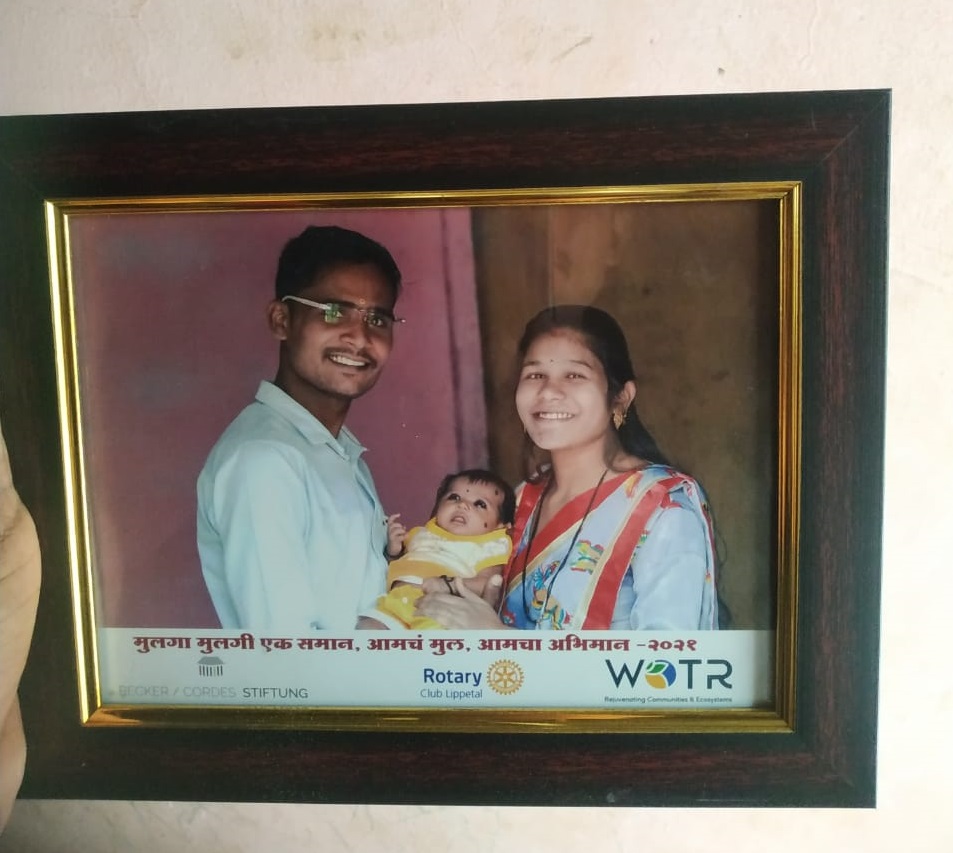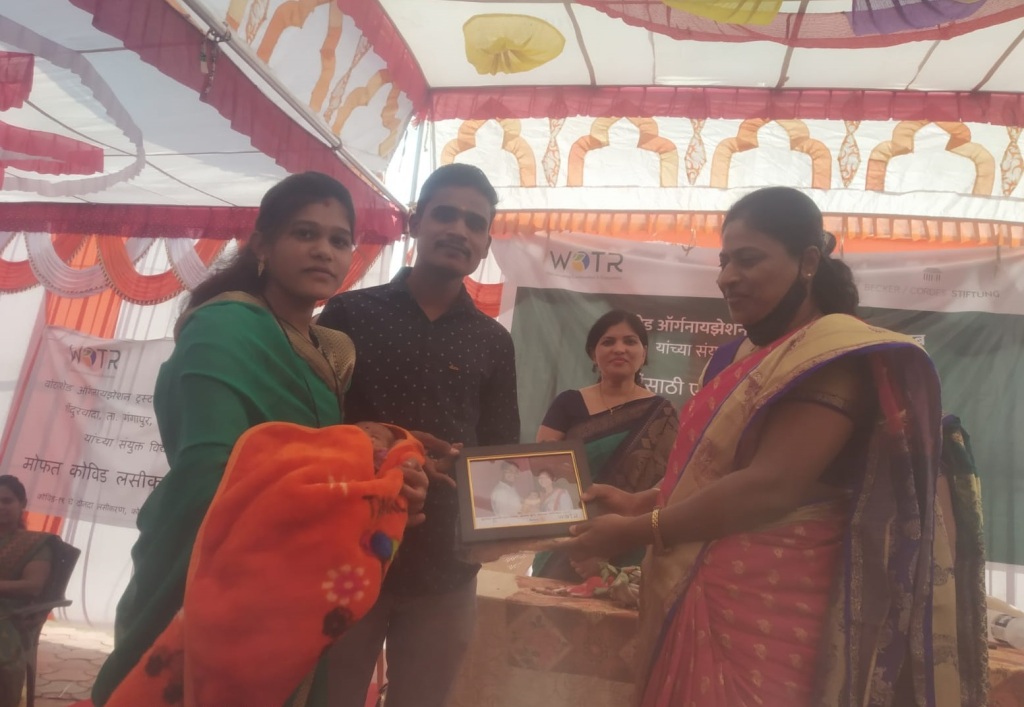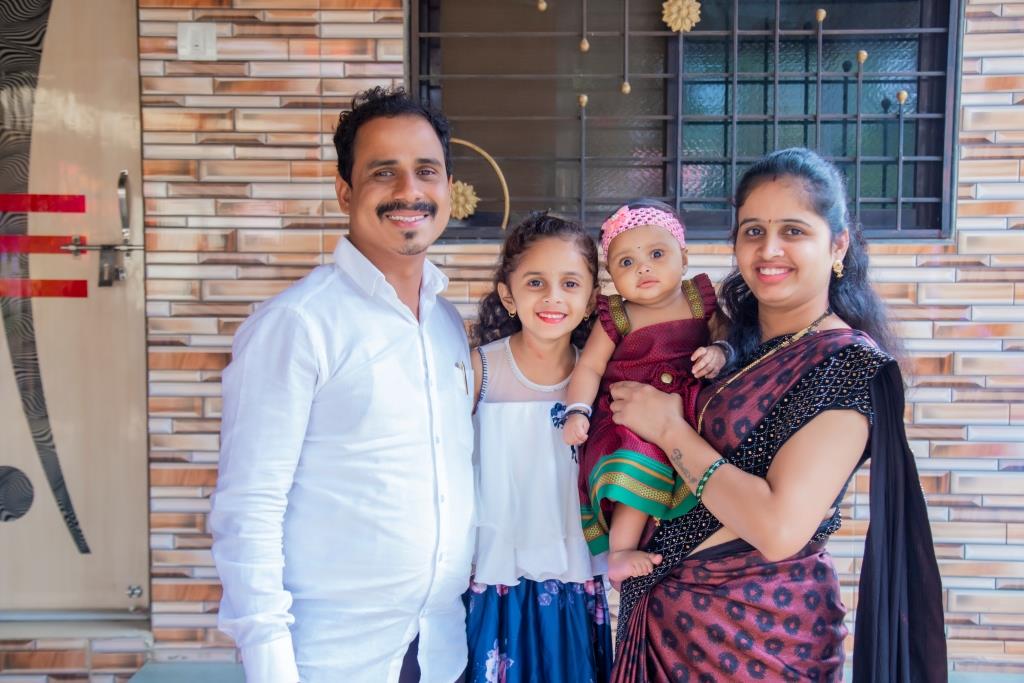by Harshal Khade
Today is National Girl Child Day and is celebrated on January 24 every year. It is primarily aimed at promoting awareness about the rights of the girl child, and increasing awareness on the importance of girls’ education, health and nutrition. The day is an initiative of the Ministry of Women and Child Development, Government of India, to provide all support and opportunities to the girls of the country.
WOTR launched its initiative, ‘Save the Girl Child’ in 2012 in Ahmednagar and Beed districts of Maharashtra. Later it expanded the campaign to Aurangabad, Raigad, Satara and Thane districts and now covers 157 villages and 24887 households. WOTR sensitises communities to becoming gender-sensitive and promotes health literacy among men and women of all age groups. Here’s how WOTR is encouraging communities to welcome girl children in an innovative way:
Welcoming the girl child in an innovative way
WOTR encourages the birth of every girl child in the community to be an occasion for celebration. Family photos are clicked along with the baby, framed and then given to the family by felicitating them at a public event. This unique celebration has been a source of happiness for many families over the years and inspiration to others.
Parmeshwar Baburao Sabhadinde of Mangegao village, Gangapur block, Aurangabad district, Maharashtra says, “I always wanted my first child to be a girl child. I strongly believed, that becoming a father to a girl child would be good fortune and an honour. When my wife Nisha was pregnant, many people used to ask me if I wanted a baby boy or a baby girl. I always secretly hoped that it would be a baby girl. I received a lot of information about girl children through WOTR’s initiatives as a part of the ‘A Chance for Girls’ project.

It was one of the happiest days of my life when our little bundle of pink joy finally arrived in this world. When she was one and half months old, the WOTR team clicked her photo and presented us with the framed photograph at a public ceremony attended by over six hundred people. Thanks to my daughter Aboli, my wife and I were recognized in my community. Girls can do everything a boy can do or achieve. I am grateful to WOTR for making us realise and celebrate the birth of a girl child.”

Focussing on mother and child
Sneha Kadav is a mother of two children and she narrates her experience of the support she received through this programme. She is from Devnhave village in the Raigad district of Maharashtra. “My second child, Mokshada was born on 20th May 2021. She was underweight, weighing only 2.250 kg at the time of birth. Soon her weight dropped to 2 kg. We followed all the precautions given by the doctor on how to take care of the newborn. I got very useful tips from WOTR’s Cluster Level Health Promoters for my diet and health care tips for my baby as well. I was also given Spirulina Chikki (a recommended nutritional supplement) for three months. I breast fed my baby for six months and post that, I introduced her to other foods as well such as a porridge made up of rice, moong dal, nutmeg and other nutritious ingredients. All this helped increase my baby’s weight gradually.”
Spirulina Chikki provides valuable bio available micronutrients such as Vitamin A, beta carotene and easily digestible algal proteins recommended for lactating mothers. It is provided to mothers of malnourished children who are unable to consume solid foods.

Progression of baby from Red Category to Green Category
As part of WOTR’s child growth monitoring strategy, every month, the weight and height of 0-5 years of children in the village are monitored. WHO growth standard charts are provided to the Mahila Pravartaks (Health Promoters) who map the child’s growth with the charts. The standards of height and weight are different for boys and girls depending on their age. Each child’s weight and height is plotted on the axis and grades can be categorised on the basis of colour.
Mokshada was categorized as severely under-weight (Red colour). Post-WOTR’s urgent intervention, she was categorized as moderately under-weight (Orange colour). Now she is graded as Median Normal (Green colour) at 8 kg. Within the first three weeks of WOTR’s intervention itself Mokshada’s weight increased to 2.5 kg.
Sneha and her husband Bhushan are happy and proud of Mokshada, their second girl child. Sneha says,” I hope Mokshada becomes a very bright student. We would be happy if she becomes an IAS officer and makes us proud the way Mokshada Patil (an IPS officer) has done.”
Women being more vulnerable to effects of climate change the focus on girl and women empowerment helps WOTR address this vulnerability and make both women and the communities that they live in, resilient. Welcoming the girl child is one such practice by WOTR that helps it achieve this goal.
‘Welcoming the girl child’ is an initiative under the ‘A Chance for Girls’ project, currently being implemented in Aurangabad district with the support of BECKER/CORDES-Stiftung and Rotary Club Lippetal and in Raigad district with the support of TATA Steel.





